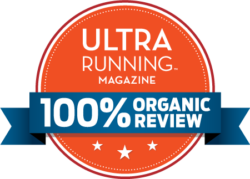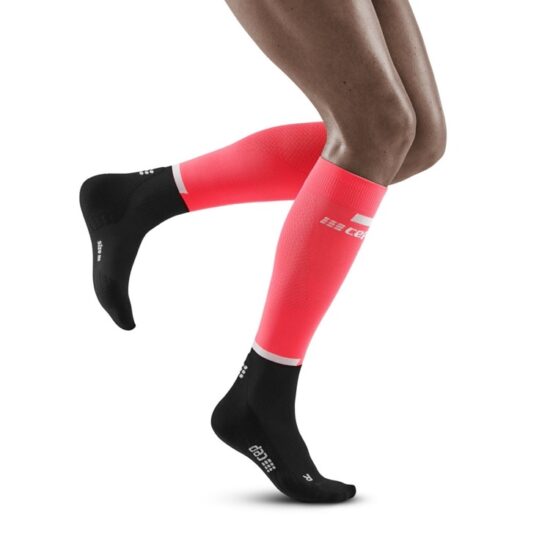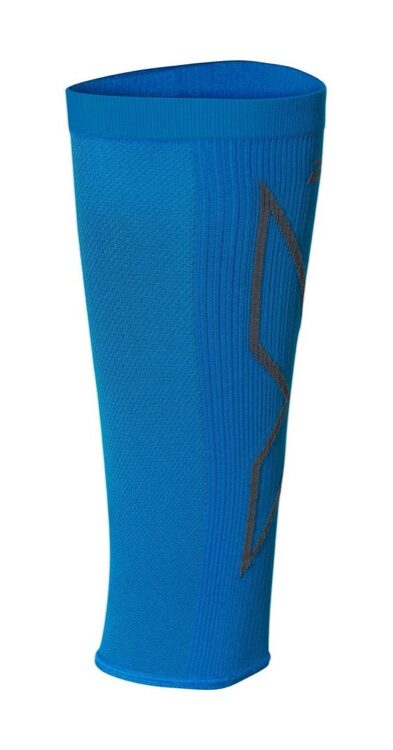 Our reviews are 100% organic. We do not accept payment for reviews or bundle with advertising budgets. In most cases, the brand is providing the product to our reviewers free of charge.
Our reviews are 100% organic. We do not accept payment for reviews or bundle with advertising budgets. In most cases, the brand is providing the product to our reviewers free of charge. To compress or not to compress? This question has bounced around the running world for decades. A quick look around local training clubs or race events will tell you how popular compression is with full-length socks, calf sleeves, tights and more. Compression apparel can be found at almost any run, no matter the distance or ability level of the runner. So, do they work?
While scientific consensus about the benefits of compression may be lacking, enthusiasm around the products most certainly is not. Many runners swear by the benefits of compression, and anecdotal testimonials are easy to come by. Devotees give a variety of reasons for their use: improved circulation and muscle support during intense activity, delayed fatigue during longer efforts, injury protection or prevention, faster recovery after training or racing. The simple fact that compression garments make people feel better during activity is a metric that shouldn’t be overlooked; if you think they’re helping you, then they probably are.
So, what is exactly is compression? It is exactly what it sounds like: a tight-fitting garment that compresses or gently squeezes your muscles. Their most popular application is in the lower legs, and that is our area of focus for this review. Full length socks or calf sleeves that are separate from the foot, are worn up the entire length of the calf and use elasticized materials with directional fabric alignment to apply external pressure and support to the musculature of the leg. Done correctly, compression garments provide graduated compression that is tighter near the ankle and more relaxed as you move up the leg, for the purpose of decreasing swelling further down.
But why should you do it? To begin, look to the medical industry. Compression garments have long been used to treat circulatory disorders associated with leg ulcers, deep vein thrombosis, diabetes, venous insufficiency, traumatic swelling, lymphedema and more. It stands to reason that if compression has a therapeutic effect for medical ailments, it can also have performance or recovery benefits for athletes. The jury is still out on this one, though, with studies that point in both directions as to the efficacy of compression for running. One reason for the discrepancy is that for comfort reasons, the amount of pressure in some performance-oriented compression is typically lower than what is found in medical grade garments. But the feeling is similar – and as we mentioned, if you like how they feel, there’s a good chance they’ll help you perform.
How did we test? We received both full-length socks and calf sleeves from four major brands and put them through their paces. The garments were worn for a variety of distances and conditions, and then also as recovery pieces over the course of a 4-6 week period. Below, we’ve pointed out some of the construction details of each, and included our thoughts on performance and fit.
OS1st
Zoned compression distinguishes OS1st products, with graduated compression distributed across six “zones,” from firm to light, starting in the foot. The firmest zones support the plantar fascia and Achilles, while the moderate and light zones improve fit and comfort as well as support the muscles and improve circulation. Effective for everything from shin splints and plantar fasciitis to recovery, OS1st has a versatile line of products.
Our testers appreciated the snug fit and feel of the OS1st lineup, with medical grade compression that makes them among the firmest in our entire test group, staying in place with overall support. Medical grade compression refers to a high level of graduated compression, with a pressure rating in the 20-30 mmHg (millimeters of mercury) range. This holds true even with the “Thin Air” line, which has a lighter weight knit mesh material in the front of the calf sleeves to improve breathability and circulation.
Notable products in the OS1st lineup include:
- CS6 Performance Calf Sleeves ($40): These can be worn alone or with the FS6 foot sleeve. They include medical grade compression with a soft, moisture-wicking fabric that is comfortable for all-day use.
- FS4+ Compression Bracing Socks ($50): This is an all-in-one performance and recovery sock with medical grade compression and a bit of cushioning under the foot.
- TA6 Thin Air Performance Calf Sleeves ($35): Sleeves provide the same compression as the CS6 sleeves, in a significantly thinner and lighter fabric that maximizes cooling and breathability.
2XU
2XU compression pieces focus on advanced plantar fascia and arch support, plus protection from shin splints. They use a unique “X-Lock” support system to help keep the foot in place inside the socks and reduce or prevent blistering. Graduated compression promotes increased circulation and improved muscle repair and recovery, while zoned mesh ventilation increases breathability. Seamless construction and light cushioning round out the feature set, making both the socks and the sleeves very comfortable overall.
These models were noted by testers to be the most breathable across the lineup, with mesh construction maintaining a cool feeling without allowing perspiration buildup. The fit of 2XU products is more customized than the other brands, with six sizes available in the full-length socks. 2XU also offers a variety of shorter socks, including no-show and quarter length, which keep the same feature set while providing arch support in a shorter design. The shorter versions would make a perfect pairing with calf sleeves for those who prefer the versatility of a sleeve without sacrificing arch compression.
Notable 2XU products:
- X Compression Calf Sleeves ($40): Seamless construction, zoned ventilation, can be worn with or without compression socks
- Vectr Cushion Full-Length Compression ($50): Full length socks with X-Lock anti-blister technology, quick drying fabric, and 3.25mm of cushioning underfoot
CEP
One aspect of CEP products we appreciate is the transparency of compression levels (in mmHg) with most of their products, allowing for easy comparison and accommodating personal preferences. With other brands, you often have to dig a little to find this information. Their sizing model is somewhat unusual, with a size 2-5 scale for leg garments that is based on calf circumference only. Most of their products are offered in men’s and women’s versions, but the sizing for both genders is based off the same scale. New for CEP this year is an Ultralight series that weighs 30% less than their standard sleeves and are built with polyamide fibers for a cooling effect against the skin. This series proved to be favorites of our testers for fit and function, and would be the most comfortable for those who normally don’t enjoy compression wear.
Another bit of variability with CEP sleeves is that they tend to run slightly shorter than the other brands we tested, which our shorter testers enjoyed but taller runners may find a bit lacking. CEP makes three distinct sock lengths – short, low cut and no-show – to accompany calf sleeves or wear alone if you just prefer compression around your feet.
Notable CEP products:
- Ultralight Compression Calf Sleeves ($40): Medical grade graduated compression in a light and breathable fabric
- Ultralight Tall Compression Sock ($60): Hydrophobic materials for wicking and breathability, anatomically padded cushioning underfoot

Zensah avocardio sleeve
Zensah
Zensah blows the competition away in style points, with a constantly changing lineup of seasonal collections featuring modern art, holiday graphics, animal faces, or whimsical cartoons. Don’t worry, they’re also available in basic black and solid colors. Zensah socks are built with ribbing in the arch and ankle (for the full-length sock) and in the shin (for sleeves) to provide muscle support, and targeted compression in high demand areas. Their fabric has odor control in addition to being lightweight and moisture-wicking, allowing multiple uses between washings.
Our testers loved the overall comfort of these models, with a durable feel that isn’t excessively warm. They seem easier to get on and off than other brands, despite having similar levels of compression. Zensah’s sizing uses a straightforward XS-XL system for sleeves, and a S-XL system for socks that correlates to shoe size. The sleeves do refer to a calf measurement and user height for proper sizing, but our testers found that they wore the same size in sleeves and socks with almost no exception. One unique item in the Zensah lineup is a full-length leg sleeve, which one tester compared to the Normatec air compression system at a fraction of the cost; this kind of sleeve is also becoming more prominent among basketball players and other athletes during competition.
Notable Zensah products:
- Compression Leg Sleeves ($40): Moisture wicking, anti-odor calf support
- Tech+ Compression Socks ($50): Italian made, durable and comfortable fabric with minimal cushioning underfoot
- Full Length Compression Sleeve ($30): Graduated compression from ankle to thigh, suitable for activity or recovery














